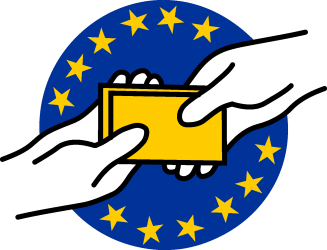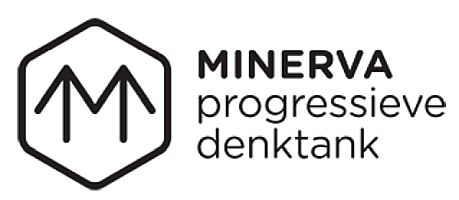In September 2008, the American investment bank Lehman Brothers fell. What followed was a financial crisis of unseen proportions that drew the entire world economy. In order to contain the crisis, central banks were forced to take exceptional measures. Probably the most controversial measure was QE, or quantitative easing: the massive purchase of financial assets with the aim of reducing the long-term interest rate and thus encouraging investment. On December 13, ten years after the outbreak of the Great Financial Crisis, the European Central Bank will in all probability announce that they too will stop their QE program. Time, therefore, to learn from the monetary policy after the crisis and to make an evaluation of ten years of macroeconomic stabilization policy.
This evaluation for Think Tank Minerva by Mattias Vermeiren and Hielke Van Doorslaer, researchers at Ghent University specialized in monetary policy, shows that the QE program of the European Central Bank (ECB) was largely inefficient, due to a lack of flanking expansionary fiscal policy. The defects in the structure of QE itself, however, point the way to a monetary crisis policy adapted to the current economic context: monetary financing of the government, or helicopter money: QE – for the people.
Mattias Vermeiren and Hielke Van Doorslaer show in this study the importance of QE in curbing the crisis. Their study makes it clear that the fiscal policies of the euro-zone member states, driven by their belief in the doctrine of ‘expansive economy’ or the theory that savings can boost the economy, made it almost necessary for the ECB to implement a QE program. to pull the economy out of the doldrums.
Vermeiren and Van Doorslaer also go deeper into the most controversial aspects of QE, such as the criticism that QE would lead to a derailment of inflation, that QE would jeopardize the independence of the central bank, that it would free government giving rise to more and more debts, or that QE would increase the inequalities between rich and poor. It often appears that most ‘conservative’ criticisms of QE are not consistent with the facts.
Yet this study is not a defense of QE. Vermeiren and Van Doorslaer show that QE and the implemented macroeconomic policy have not succeeded in fulfilling their objectives. It took a full decade for most advanced economies to close their output gap, the difference between their potential growth and their current growth: a sign that the aggregated demand remained far below par and not stimulated enough. This failure has a heavy cost: unnecessarily many people lost their job or found no work, and necessary investments were not forthcoming, because macroeconomic policy did not do what it had to do. We have lost years.
In other words, the crisis has demonstrated the failure of the prevailing macroeconomic policy framework and the severe constraints of QE to adequately support the economy in times of crisis. Central banks must therefore take a different approach, argue researchers Vermeiren and Van Doorslaer: do not pump money in financial markets, as happens with QE, but inject directly into the real economy.
This is best done in a coordinated approach with fiscal policy, in order to prevent the central bank’s expansionary measures from being actively countered by unproductive cutbacks. That is why central banks should resort to monetary financing, creating additional money and transferring it to the government or a public investment fund to invest in the real economy. The extra resources can thus be used, for example, to make the necessary investments to enable the climate transition.
However, the Treaty on the Functioning of the European Union contains an explicit prohibition on monetary financing. The ECB can, however, directly transfer money to European households as an alternative option: the so-called ‘helicopter money’. In this way, the detour via the financial markets is avoided: the money created must not pass through commercial banks and investment funds first in the hope that it would flood the real economy via ‘ trickle down ‘; the real economy is directly stimulated because the money flows directly to the citizens themselves. It is QE, but for the people.
Authors: HIELKE VAN DOORSLAER & MATTIAS VERMEIREN
Translated by google from Think Tank Minerva: https://www.denktankminerva.be/studies/qeforthepeople
Download: complete study QE-for people
What is Minerva think tank?
Think Tank Minerva is a think tank within the broad progressive movement . Through sharp opinions and well-founded studies, the think tank wants to make a progressive voice resound in the social debate. The intention is twofold: on the one hand to review existing ways of thinking, on the other hand to show that there are concrete, feasible and desirable alternatives. The minerva think tank is driven by equality, solidarity, democracy, freedom, sustainability, justice and international solidarity.
The content line of the Minerva think tank is determined by regular meetings by the editors , a group consisting of core members and members. This editorial team is responsible for the studies and opinion pieces, and for the content of the website. She also invites third parties to write guest contributions. There are two scientific staff members: Matthias Somers and Sacha Dierckx. The substantive autonomy of the editors is guaranteed by an editorial statute, comparable to the status of a newspaper or magazine.
The editors receive advice from and are assisted by the members of the Scientific Council . This Board consists of academics who can support the think tank within their area of expertise. However, the members of this Scientific Council are not responsible for the positions taken by the editors.
Minerva is a non-profit organization that is independent but wants to communicate transparently about its resources. The founding members of Minerva vzw are, in alphabetical order: 11.11.11 vzw, ABVV, ACV, Bond Beter Leefmilieu, the actual association Poliargus and the Stichting Gerrit Kreveld. Joined members are, in alphabetical order: ACLVB, Nationaal Verbond Socialistische Mutualiteiten and Stichting P & V. These members form the General Assembly and the Board of Directors of the non-profit organization. The members are not responsible for the positions of the Minerva think tank.


